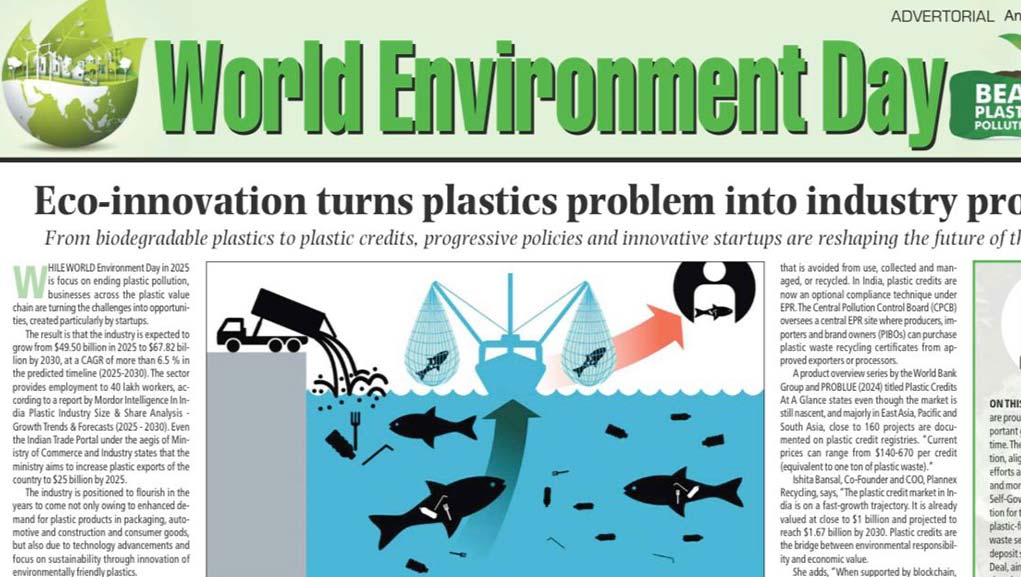From biodegradable plastics to plastic credits, progressive policies and innovative startups are reshaping the future of the industry.
WHILE WORLD Environment Day in 2025 is focus on ending plestic pollution, businesses across the plastic value. chain are tuming the challenges into opportuni ties, created particularly by startups.
The result is that the industry is expected to grow from $49.50 billion in 2025 to 567.82 bil-lion by 2030, at a CAGR of more than 6.5% in the predicted timeline (2025-2030). The sector provides employment to 40 lakh workers, ac cording to a report by Mordor Intelligence in In dia Plastic Industry Size & Share Analysis-Growth Trends & Forecasts (2025-2030).
Even the Indian Trade Portal under the aegis of Ministry of Commerce and Industry states that the ministry aims to increase plastic exports of the country to $25 billion by 2025. The industry is positioned to flourish in the years to come not only owing to enhanced demand for plastic products in packaging, autemotive and construction and consumer goods, but also due to technology advancements and focus on sustainability through innovation of environmentally friendly plastics.
This has led to opening of business opportunities for startups and companies in the sphere of plastic waste management. The Extended Pre-ducer Responibility (EPR) policy makes it mandatory for manufacturers to be accountable for control of post-consumer waste with a life cycle approach, which opens the opportunity for collection facilities, recycling facilities, and eco friendly waste disposal techniques.
A startup based in Imperial College London, incubated in 2015 launched a technology re-lated to self-degrading plastic cup at Confer ence of Parties 26 (COP 26) by Prince Charles, who is now the king, with operations in india, Polymateria has come up with the concept of
biodegradable plastic that returns to the nature within two years and does not cause the problem of microplastics.

